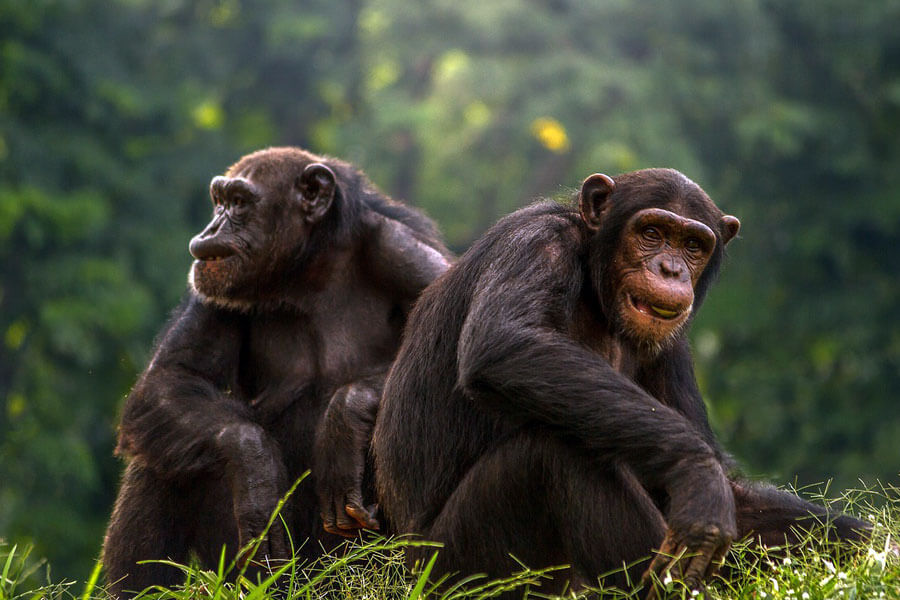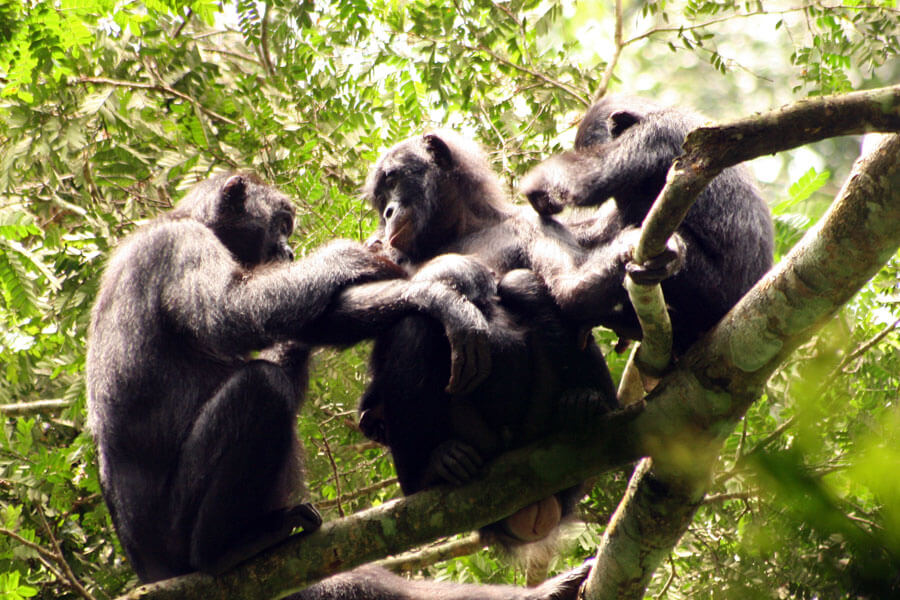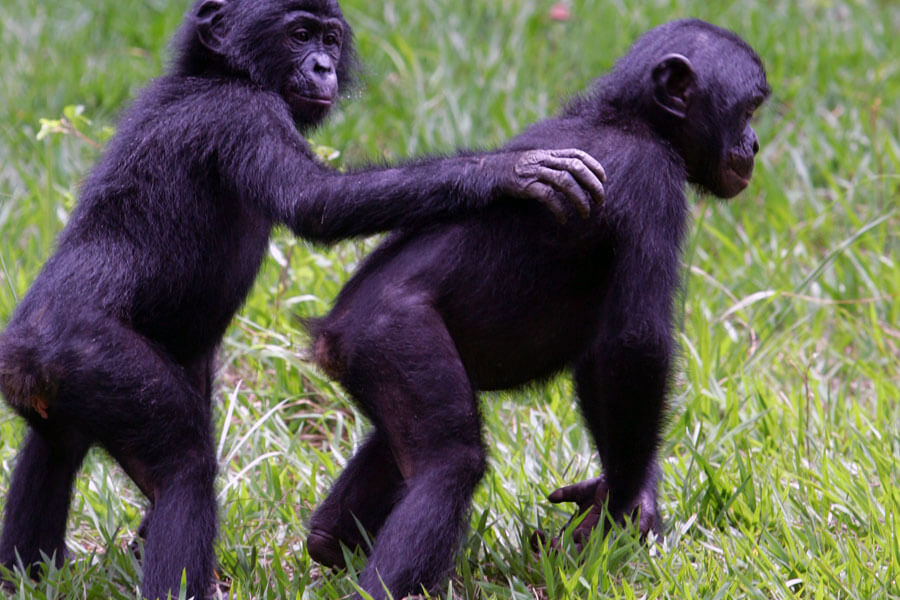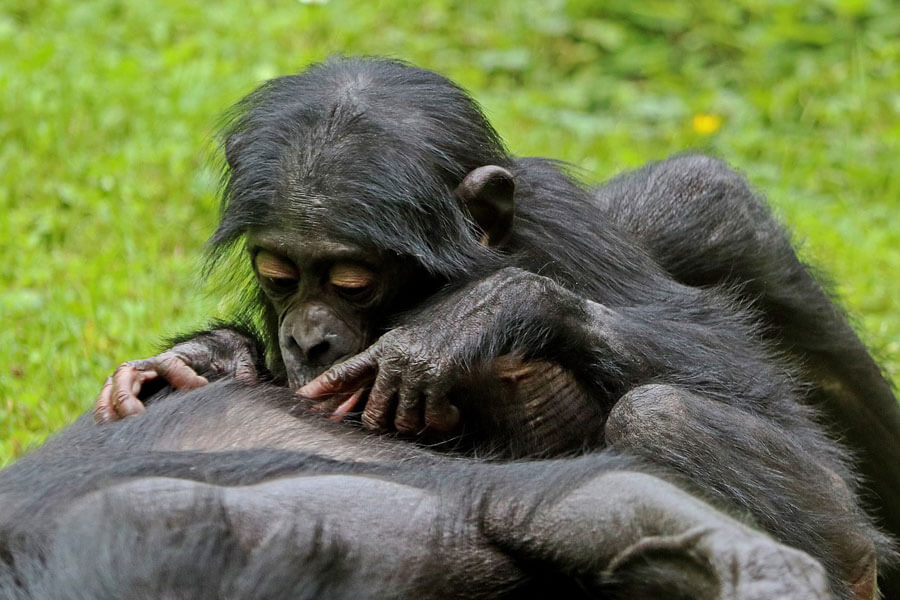Welcome to the captivating world of bonobos, one of our closest living relatives in the animal kingdom. Known for their remarkable social behaviour and intelligence, bonobos are a species of great ape that inhabit the lush forests of the Congo Basin in Central Africa.
In this article, we will dive into the life of bonobos and learn about their diets, habitat, threats, social structure and much more.
Facts About Bonobos
1. Physical Description
Bonobos share many physical similarities with chimpanzees, but they have some distinct features. They have a slender and compact build, with long arms and relatively long legs.
On average, bonobos stand between 2 to 3 feet tall when upright. They are covered in dark hair, and their faces are characterized by a high forehead, prominent ears, and expressive eyes.
Notably, bonobos possess a more slender body shape compared to their chimpanzee counterparts.

2. Habitat
Bonobos live in the dense rainforests of the Congo Basin in the Democratic Republic of Congo. They are specifically found south of the Congo River, inhabiting a vast area of tropical forest.
These forests provide the bonobos with abundant food sources and a complex environment for their social interactions and behaviours.
3. Diet & Eating Habits
Bonobos are primarily frugivorous, meaning their diet consists mainly of fruit. However, they are opportunistic omnivores and also consume a wide range of plant parts such as leaves, seeds, flowers, and bark.
Additionally, they include insects and other small invertebrates in their diet. Bonobos are known to display inventive feeding techniques, using tools such as sticks or rocks to crack open nuts or extract food from hard-to-reach places.
4. Social Structure

Bonobos are very social animals that live in complex societies characterized by female dominance. They form communities called "parties" or "units" consisting of several adult females and their offspring.
Males usually disperse from their natal group to join other communities. Bonobos are known for their peaceful and egalitarian social interactions, using social bonds and sexual behaviour to resolve conflicts and maintain harmony within the group.
5. Breeding & Development
Breeding among bonobos can occur throughout the year, and females typically give birth to a single offspring after a gestation period of 8 months. The bond between mother and offspring is strong, with the young bonobo relying heavily on its mother's care and protection.
Juveniles stay with their mothers for several years and gradually gain independence as they reach maturity.

6. Threats
Bonobos face numerous threats to their survival, primarily due to habitat loss and fragmentation caused by logging, mining, and human encroachment. The bushmeat trade also poses a significant threat, as bonobos are illegally hunted for their meat.
Additionally, civil unrest and political instability in the region further exacerbate the challenges faced by bonobo conservation.
Related article: Africa's 18 most endangered wild animals
7. Conservation
Conservation efforts are critical to protect the future of bonobos. Establishing protected areas and promoting sustainable forest management is vital for preserving their habitat.
Engaging local communities in conservation initiatives, providing alternative livelihoods, and raising awareness about the importance of bonobos as a flagship species are key strategies in their conservation. International collaboration and support are also crucial in ensuring the survival of this endangered great ape.

Final Thoughts
Bonobos play a vital role in maintaining the balance of their forest ecosystems. As seed dispersers, they contribute to forest regeneration and plant diversity.
Their complex social behaviours, including empathy, cooperation, and conflict resolution, provide valuable insights into the evolution of human sociality and offer a glimpse into our shared ancestry.
